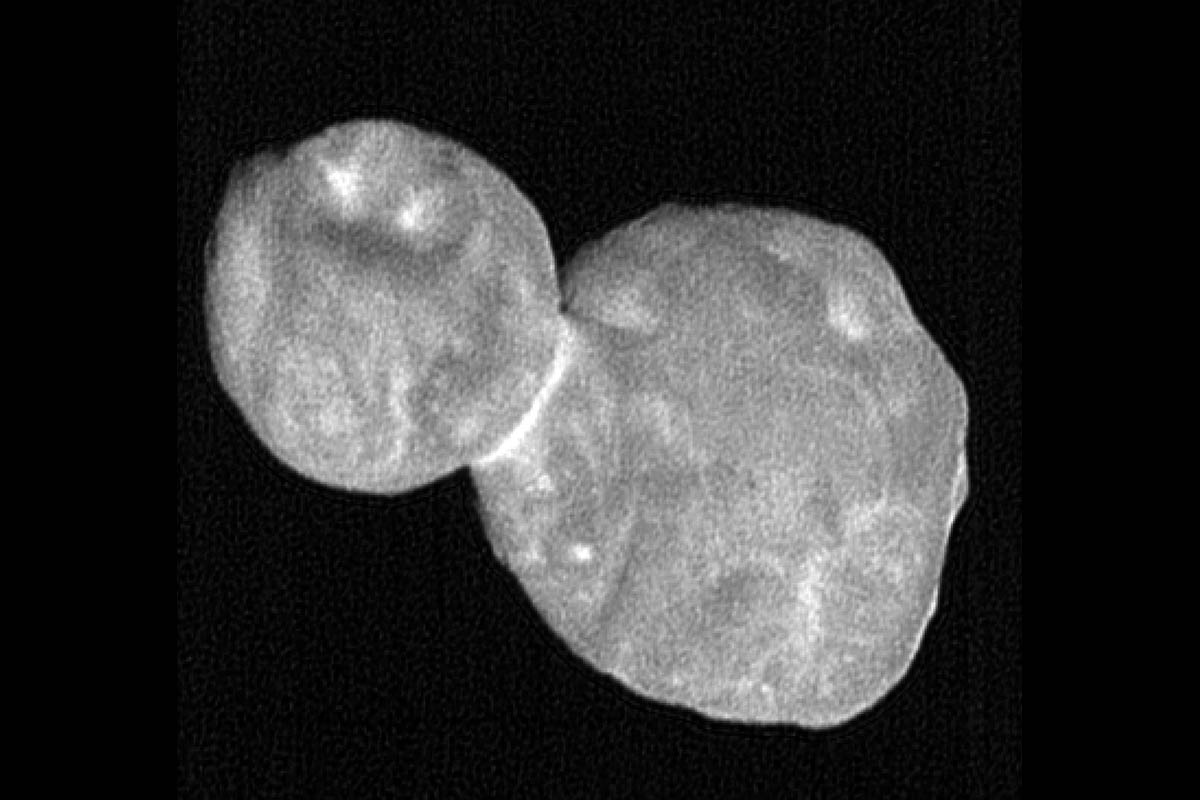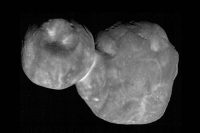This processed, composite picture combines seven individual images taken with the New Horizons Long Range Reconnaissance Imager (LORRI), each with an exposure time of 0.025 seconds, just 19 minutes before the spacecraft’s closest approach to Ultima Thule (officially named 2014 MU69). (NASA/Johns Hopkins Applied Physics Laboratory/Southwest Research Institute, National Optical Astronomy Observatory)
Home This processed, composite picture combines seven individual images taken with the New Horizons Long Range Reconnaissance Imager (LORRI), each with an exposure time of 0.025 seconds, just 19 minutes before the spacecraft’s closest approach to Ultima Thule (officially named 2014 MU69). (NASA/Johns Hopkins Applied Physics Laboratory/Southwest Research Institute, National Optical Astronomy Observatory) This processed, composite picture combines seven individual images taken with the New Horizons Long Range Reconnaissance Imager (LORRI), each with an exposure time of 0.025 seconds, just 19 minutes before the spacecraft’s closest approach to Ultima Thule (officially named 2014 MU69). (NASA/Johns Hopkins Applied Physics Laboratory/Southwest Research Institute, National Optical Astronomy Observatory)
This processed, composite picture combines seven individual images taken with the New Horizons Long Range Reconnaissance Imager (LORRI), each with an exposure time of 0.025 seconds, just 19 minutes before the spacecraft’s closest approach to Ultima Thule (officially named 2014 MU69). (NASA/Johns Hopkins Applied Physics Laboratory/Southwest Research Institute, National Optical Astronomy Observatory)



